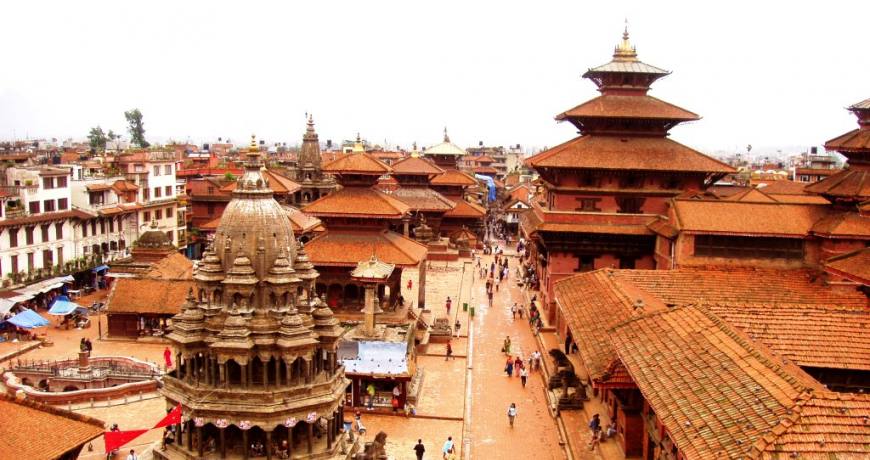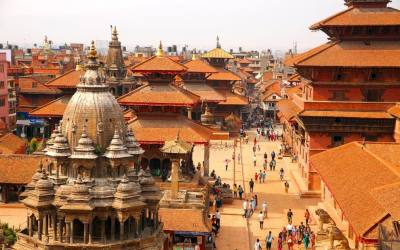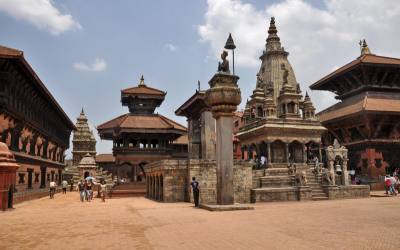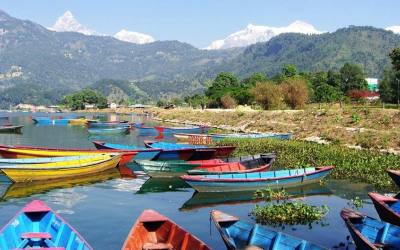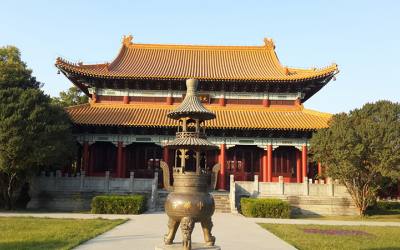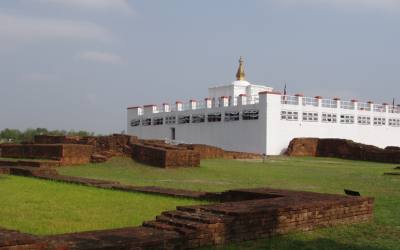Kathamandu Valley
The Valley is situated at an altitude of 1,336 m above sea level and covers an area 218 sq. miles; The rich tapestry of the cultural heritage of Nepal is synthesized in the Kathmandu Valley, the home of the ancient and sophisticated Newari Culture. The newars are the indigenous inhabitants of the Valley and the creators of the splendid civilization of its three cities – Kathmandu, patan and Bhaktapur. The skillfully – built temples and palaces, delicately – engraved stone and metal images, carved wooden columns and pillars, and the history laden shrines and chaitya of these three historical cities stand testimony to the newar’s artistic achievements.
Temples of Kathmandu
Machhendranath Temple
The temple of Sweta machhhendranth is situated at machchendra Bahal between Indra Chowk and Asan, It is a pogada of considerable artistic beauty. The deity is also called Janmadyo or Machhendra.
Akash Bhairav Temple:
A three – storey temple in the main market avenue, called Indra Chowk, the image of Akash Bhairav is displayed outside for a week during Indra Jatra, the festival of Indra, the God of Rain.
Hanumandhoka (Kathamdnu Durbar Square):
It is the historic seat of royalty. The Durbar Square, with its old temples and palaces, epitomizes the religious and cultural life of people. It is here that kings of Nepal are crowned and their coronations solemnized. Interesting things to see here are, Taleju temple built by king Mahendra Malla in 1954 AD, the temple of Kal Bhairab , the god of destruction, Nautale durbar, the statue of King Pratap Malla, the big drum and the Jaganath temple. It was listed in the UNESCO world heritage monument list in 1979.
On the right hand corner, a large wooden lattice screen hides an enormous gilded face of Sweta Bhairab. The screen is removed only during the Indra Jatra festival.. there are also the Numismatic museum and Tribhuban museum inside the Hanuman Dhoka palace building . Photography is prohibited inside the museums. Both the mseums remain closed on Tuesday and government holidays.
Temple of living Goddess ( Kumari Ghar)
Kumari ( Vestal virgin) ., or living goddess, who represents a very ancient Hindu deity of Nepal locally known as Taleju, is Buddhist by birth. The Temple of Kumari is situated in the vicinity of Hanuman Dhoka Palace. The Bulding has intricately carved wooden balconies and window screens, the kumari acknowledges greetings from bacony window. Once a year, During Indra jatra festival, the king of Nepal seeks the Kumari’s blessing.
Kasthnmandap
Located near the temple of Kumari, it is said to have been build by King Laxmi Narsingha Mall in he beginning of the sixteenth century. It is said to be constructed from the wood of a single tree. The city of Kathmandu derives its name form this Temple.
Ashok Vinayak:
The small but very important temple of Ashok Vinayak is situated behind the Kasthamandap. It is also known as Kathmandu Ganesh or maru Ganesh
Jaishi Dewal:
A five-minute walk from Kasthmandap is the shiva Temple of jaishi dewal which is famous for its erotic carvings. It is still one of the main routs of the chariot festival of Indra Jatra and other festivals.
Bhandrakali Temple:
At the eastern edge of the Tundhikhel, near Shahid Gate, stands the temple of goddess Bhadrakali. This temple is also known as Lumarhi temple and is one of the main Shakti Temples of Kathmandu city.
Budhanilkantha:
About 8km north of Kathmandu at the base of Shivapuri hill is a remarkable huge statue of Lord Visnhu. Reclining on a bed of snakes.This is one of the masterpieces of stone sculptures of the Lichchhavi period. This fifth century statue is in the middle of a small pond and seems to float in water.
Swayambhuanth
This is one of the world‘s most glorious Buddhist Chaityas. It is said to be 2,000 years old. Painted on the four sides of the spire’s base are the all seeing eyes of Lord Budhha. It is 3Km west of Kathmandu city and it situated on a hillock about 77 m commands an excellent view of the Valley. This stupa is the oldest of its kind in Nepal. It was listed in the UNESCO world Heritage Monument List in 1979.
Pashupatinath Temple:
Situated 5km east of kathamandu, the temple of Lord Shiva, Pashupatinath, with two tired golden roof and silver door is considered one of the holiest for Hindus. Although only Hindus are allowed inside the temple, visitors can clearly see the temple and the activites performed in the Temple premises from the eastern bank of the Bagmati river. The Temple was listed in the UNESCO world heritage Monument List in 1979
Guheswari Temple:
Near Pahupatinath Temple is another historic and holy temple of Guheswari. Only hindus are allowed to enter the temple courtyard.
Chandra Vinayak
The temple of Chandra Vinayak is situated about 200m north of Chabahil stupa. This double tiered brass- roofed temple house is with a tiny image of Lord Ganesh, the elephant head god.
Baudhanath
The stupa of Baudhanath lies 8 km east of Kathmandu. This ancient colossal Stupa is one of the beggest in the world. It was listed in the UNESCO world Heritage Monument List in 1979.
Shekha Narayan
Situated between Chobhar and Dakshinkali the temple of Sheka Narayan represensts one of the famous lord Narayan’s Shirne. The other three Narayans are Changu Narayan of Bhaktapur, Visankhu Narayan of patan and Ichangu naryana of Kathmandu.
Dakshinkali
The temple of Dakshinkali is situated about twenty K.M south of Kathmandu . Dakshinklai is regarded as one of most important Hindu goddes. Pilgrims visit this Temple to offer their prayers and animals sacrifices are made to the goddes. This place is also a popular picnic spot.
Kathmandu City
We offers special rates for tour
Operator and Wholeseller.
Operator and Wholeseller.
Trip Details
- Destination: Nepal
- Grade: Easy
Interested in this trip? Call: +977 9841117524 (Om) (Om) Or Email:
